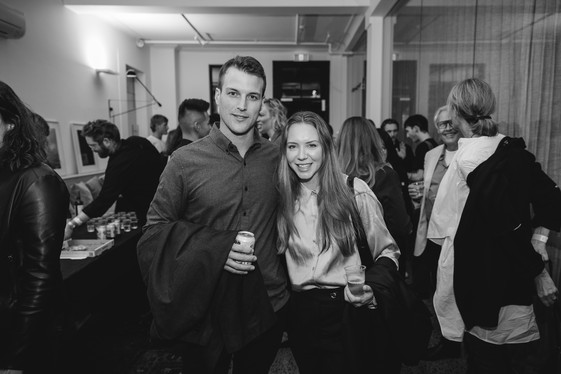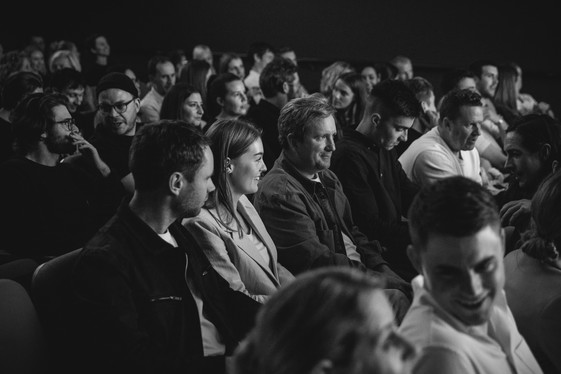The Best Design Awards are a major feature of the local design calendar and some of last year's winners have toured the country to offer first-hand insights into their projects.
The 2021 series was recorded on video. Here is one from the series of twenty recorded.
DINZ Interview
Best of the Best Designers Speak® - Video - Warren and Mahoney Architects

MediaWorks Radio Broadcasting HQ
Scott Compton DINZ and Daniel Kempka DINZ
Warren and Mahoney Architects
Spatial designers from Warren and Mahoney (WaM) explored their MediaWorks project which sought to move eight radio brands and their respective 400 staff into one, single building.
The process began by trying to discover the unique traits of their client which lead the team to realise that each radio network that was to occupy the space was very unique and represented fairly tribal associations within their audience. WaM began to explore the language of those affiliations, how their client uses it and how that can become design.
From early discussions it became clear that they wanted something slightly different and rebellious but also discreet. The original building was a fairly dilapidated warehouse in College Hill: tilt slab, not very many redeeming features and they found that very little of the existing fitout could be used or left in its place. The plan is a very simple, rectangular one with very clearly demarcated flows. To fit the amount of workers, it was obvious they were going to need additional floorspace and the designers opted to create a mezzanine level toward the back of the warehouse as to maximise the natural light and to retain a sense of spatial drama at the entrance. The smaller, dark spaces (such as sound studios) which needed to be acoustically treated, were placed at the back.

Scott Compton DINZ and Daniel Kempka DINZ,
Warren and Mahoney Architects
WaM described the work they did to create a sense of buy-in within the various communities. It included brainstorming sessions around the present and future of their workspace as well as more aspirational, personal questions to ascertain what made them feel driven within a work environment. These lead to a few keywords or values that they felt best represented the working culture and brand: Soulful, desirable and influential. Those words, in turn, lead to a series of definitions which could be translated into visual language
One of the early, underpinning images was that of an amplifier which, to the designer, encapsulated both the work that radio is meant to do (amplify) while also retain some of the aspects of legacy and vintage feel of the industry. German industrial designer Dieter Rams quickly became one of the driving forces, while old radios and rebellious culture provided some further inspiration.
The rectangular warehouse was divided into neighbourhoods and each outfitted with a different personality that reflected the driving themes while a unifying motif was that of sound waves, which were represented at various touch points.
Much effort was placed on the reception area which includes a bespoke desk which also functions as a large speaker system. Through a collaboration with Autex, the troupe created bespoke colours and products which had much needed acoustic properties and these were pleated and folded in forms that represented visual interpretations of sound.
They also worked with Tim Webber to create furniture, including studio desks. WaM went on to document their work through fashion magazine influenced images which encapsulate the desirability and slightly rebellious nature of this workplace. Much emphasis was also placed in creating studios that were TV friendly, given the fact that much of what happens in studio is also now being transmitted through audiovisual channels.
WaM finished their presentation by showing some of the social media reactions from MediaWorks staff as proof that they were making the spaces their own.


Thanks Designworks for the pre-drinks venue
Supported by
